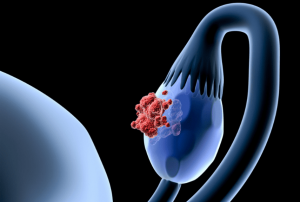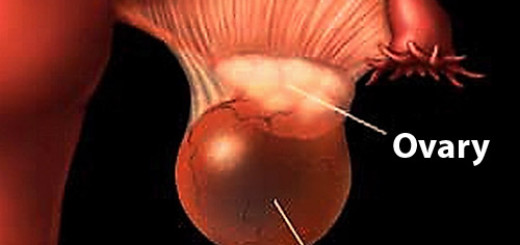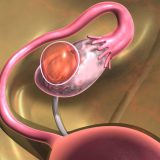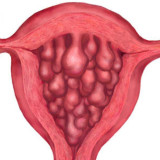All the complications associated with ovarian cyst can be divided into two groups. They are acute ovarian cyst complications and long-term dangers. The former group includes rupture of the cyst and its torsion. They are not the only threats, but they are the most common.
Emergency care for an ovarian cyst.
Acute ovarian cyst complications require emergency care. The second group (long-term complications) are those states that long remain hidden and asymptomatic.
Ruptured ovarian cyst
Ovarian cyst rupture is one of the most frequent cases when it comes to acute ovarian cyst complications. The disease means that the capsule of the cyst straining and pouring out the contents of its cavity in the abdomen.
Danger of this state is determined by two factors.
First, in that place where there was a burst cyst can be a blood vessel that leads to intra-abdominal bleeding. If the vessel is small, the bleeding stops easily by itself. But when a large vessel is damaged, lots of blood is lost.
Secondly, the abdomen has numerous nerve endings. Pouring contents of the cyst or blood out in contact with them causes severe pain.
Symptoms of ovarian cyst rupture
Severity of the symptoms depends on the amount of the contents getting into the cavity. Ovarian cyst rapture manifestation also varies due to the size of the tumor cavity and the amount of blood lost. The main manifestation of the acute ovarian cyst complication is pain. It appears abruptly, may radiate to the lower back, perineum. It is often accompanied by nausea and vomiting. When large hemorrhage appears there can also be weak, dizzy, may be fainting.
Causes of the acute ovarian cyst complication
Ovarian cyst rupture usually causes a sharp increase in intra-abdominal pressure. Sometimes it is noticeable through sexual contact, during sports, fitness and dance, during exercise, constipation. Most functional cysts are rupture-prone. This is due to the fact that the cyst has a thin capsule, which, moreover, has the property to resorption.
First aid
Noticing the acute ovarian cyst complication symptoms you need to approach medical help. Further medical measures depend on the volume and velocity of losing blood (if there is bleeding) and severity of the accompanied symptoms.
In most cases, manifestations of ovarian cyst rupture can be managed conservatively. Hemostatic and anesthetic drugs help a lot to relieve the symptoms.
Surgery is necessary only with a large blood loss and failure of medical treatment approach.
Ovarian cyst torsion
Anatomical feature of the ovary determines development of the cyst torsion. An ovary is attached to the walls of the abdominal cavity with movable ligaments. They give it certain freedom of movements. The cyst increases the weight of the ovary. Thus, with abrupt movements of the body it twists around its own ligaments. The danger of this condition is that ovarian cyst torsion suppresses the blood vessels and stops normal blood supply.
The further development of the state depends on the degree of the torsion and whether the blood flow is completely blocked or not.
Usually the acute ovarian cyst complication gives intense pain in the projection of ovarian cyst (right or left lower abdomen). That is when the patient starts to seek for medical help. To hesitate in this situation it is impossible. The operation is necessary to be performed as soon as possible. This allows to save the ovary, an important for every woman body organ. In severe cases, with the presence of the tissue necrosis, the ovary must be removed completely.
In case of acute ovarian cyst complications all patients should strictly keep a medical regime. Try to avoid abrupt movements and increased physical activity.
Approach qualified medical help as the first symptoms of acute ovarian cyst complications appear.














